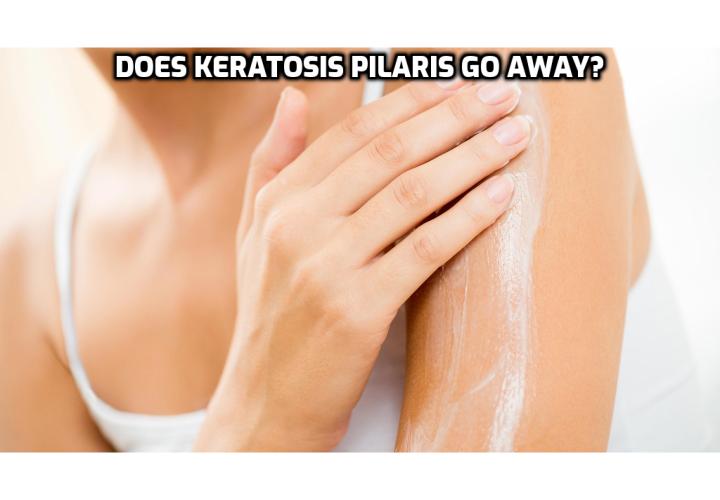Understanding Keratosis Pilaris – Diagnosing
Keratosis Pilaris
Keratosis pilaris is a common skin disorder in which
a protective skin protein called keratin creates hard plugs inside hair
follicles. This blockage leads to rough, bumpy patches on the upper arms,
thighs, and buttocks that give keratosis pilaris its trademark "chicken
skin" appearance.
To
determine whether you have keratosis pilaris, your doctor or nurse will usually
just look at your skin. Further tests are not needed in most cases, as the
condition is visually obvious and does not involve serious medical
complications.
There
are currently no laboratory or skin tests available to diagnose keratosis
pilaris definitively or to differentiate it from similar skin issues. Instead,
your family doctor or nurse will make a diagnosis based on an examination of
your skin and a review of your medical history. He or she will also ask you
questions about your symptoms and any other issues that may be related to a
skin disorder.
If
you see your doctor for a potential keratosis pilaris diagnosis, he or she will
also attempt to rule out other medical conditions. He or she will likely ask
you when you first noticed these symptoms, what seems to make them better or
worse, and whether anyone in your family has experienced similar skin problems.
Based on your answers to these questions, he or she may refer you to a
dermatologist for more-specialized skin treatments if necessary.
No
single treatment has been found to improve the symptoms of keratosis pilaris in
all patients. Generally, however, treatment options focus on softening the
keratin deposits in your skin to alleviate symptoms like redness, itching, and
irritation. Protecting the skin from dryness and loss of moisture another
primary focus of therapies for keratosis pilaris.
The
treatments for keratosis pilaris usually involve rich, gentle moisturizing
creams and oils. Topical exfoliants and retinoid creams are also common treatment
methods to promote cell turnover and prevent keratin plugging. Some individuals
have found laser therapy to be effective as well in improving the appearance of
your skin.
If
you suffer from keratosis pilaris, it is important to continue with your
medication and at-home treatments, since discontinuing treatment often causes
the condition to return.
Understanding
Keratosis Pilaris – Differentiating Keratosis Pilaris From Similar Skin
Conditions
Keratosis
pilaris occurs when plugs form in hair follicles as the result of the buildup
of keratin, a protective skin protein. These blocked follicles prevent hairs
from pushing through to the skin's surface, which creates tiny, rough bumps.
Body surfaces that have fine-hair growth are the most commonly affected areas,
such as the upper arms, thighs, and sometimes buttocks or face.
Sometimes
keratosis pilaris can be confused with other skin conditions, such as symptoms
of an unhealthy diet. For example, some children are mistakenly diagnosed with
keratosis pilaris, when in fact they are experiencing a rash as the result of
poor fat consumption. Once they maintain healthy levels of fats from nuts,
olive oil, and fish, their skin irritation and bumpy patches disappear.
Other
skin conditions that may resemble the "chicken skin" of keratosis
pilaris include acne, eczema, xerosis, eruptive vellus hair cysts,
folliculitis, and milia, among others. These skin problems generally involve
inflammation of the hair follicles or superficial redness from irritants.
Additionally,
the symptoms involved in skin issues like Darier disease, Kyrle disease,
pityriasis rubra pilaris, lichen nitidus, lichen spinulosus, and trichostasis
spinulosa are all associated with the body's keratin production or superficial
inflammation, or they are attributed to unknown causes.
Dry
skin also makes these problems more likely, so doctors recommend exfoliating
skin regularly with a gentle cleanser and moisturizing twice a day to treat and
prevent these types of skin conditions.
Although
this skin condition is common and usually harmless, you should be sure that you
receive an accurate diagnose. Otherwise, treatments may not be effective, and
your symptoms may worsen.
Because
of this, it is important that you avoid making any self-diagnoses of skin
conditions; instead, speak with your family doctor or with a dermatologist to
ensure that you receive a thorough medical evaluation. Healthcare professionals
usually diagnose keratosis pilaris by examining your skin and looking for the
characteristic scaly plugs associated with this condition.
Once
you have received an accurate diagnosis, follow your personal treatment plan
consistently to ensure maximum effectiveness in reducing your symptoms. The
most effective symptom reduction is associated with patients who closely follow
a healthy skin routine.
Watch
this video - Understanding Keratosis Pilaris Treatment and
Update | Bumps On Skin "Chicken Skin" | Vivienne Fung
This post is from the Keratosis Pilaris Remedy
program created by Alison White. Keratosis
Pilaris Remedy program is a step by step natural system through which
you can achieve a smoother and clearer skin in the shortest possible time. It
comes with a confidence-boosting skin cleanse that will help you in getting rid
of the Keratosis Pilaris condition.
You
will also get a recipe for a home-made face scrub with this product that is not
only very affordable to make, but also offer much more benefits as compared to
the expensive products available in the market.
The
author (Alison White) has also included her special Keratosis Pilaris diet
plan that includes some basic foods and make your skin to reborn and glow up
like your younger days.
Furthermore,
you will get the important information about the special ingredients that you
should consider while buying any skin product. These ingredients can be proved
very useful in eliminating the Keratosis Pilaris permanently.
To find out more about this program, visit Keratosis Pilaris Remedy Forever

